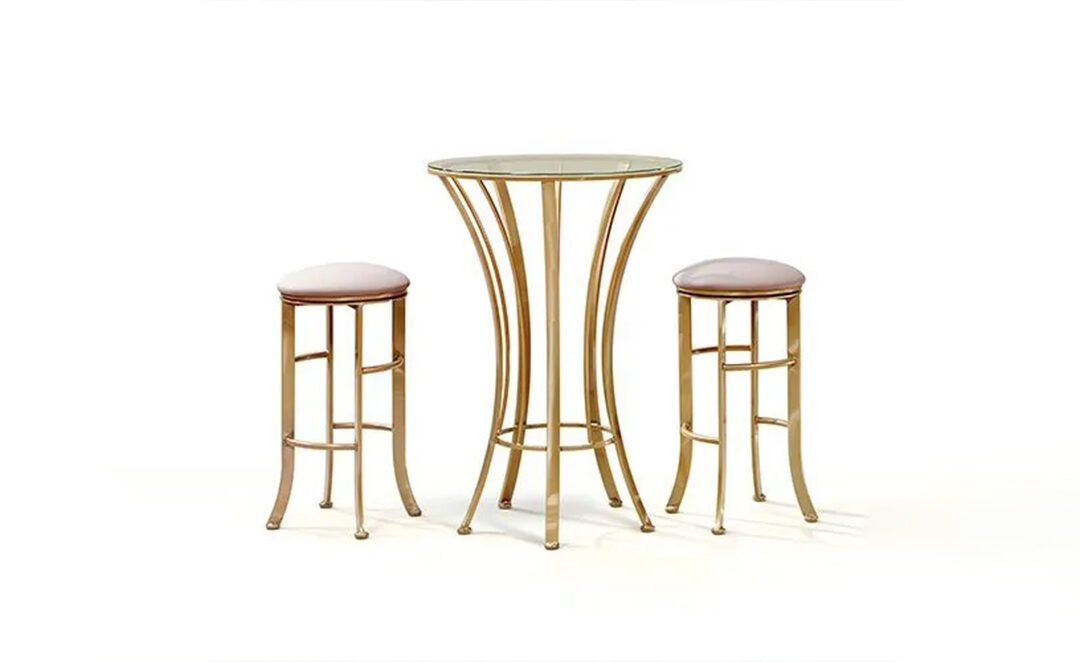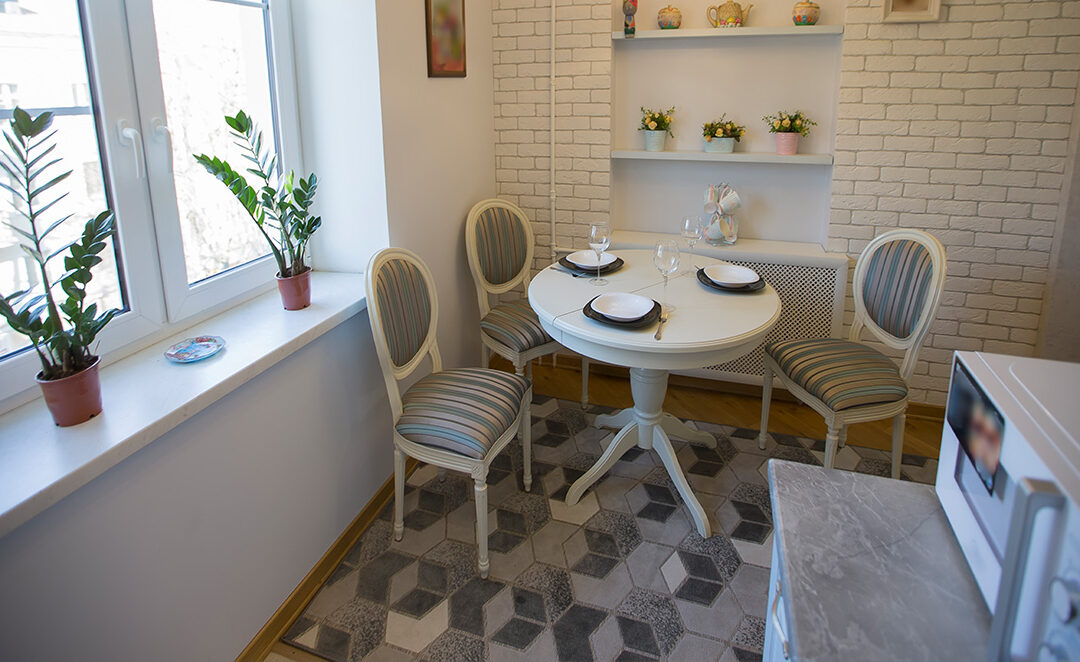It should be no surprise to readers that we have an appreciation for beautiful and well-made barstools. Over the past few months, we have featured this particular seating type in several of our articles.
With their roots embedded in the renaissance and beyond, barstools are a versatile and ubiquitous seating style that has evolved and grown in popularity over the centuries. And for a good reason. Barstool seating provides several unique benefits over traditional chairs or benches, from allowing elevation when needed to superior compactness and functionality in busy spaces.
If you look around many different settings, you will likely be able to find a barstool. At first thought, you might think of them as limited to pubs, bars, and diners; but you find barstools in beauty parlors, music venues, homes, and even research labs. But not every barstool fits into every space or purpose.
In this Ultimate Guide to Barstools, we hope to help you decide if barstools will work in your space, how to incorporate them into an existing room design, know proper upkeep and care, and in general, how to navigate the myriad options you will find while searching for your perfect fit.
Spaces Bar Stools Shine
While they require a higher counter or tabletop to accompany them, barstools are excellent space savers when it comes to seating. That is one reason they are so inherently popular across commercial dining and drinking establishments. Barstools allow additional seating to be neatly and stylishly tucked into awkward corners or along walls that might otherwise go to waste.
But those space savings are also why they fit perfectly in the home as well. They can allow for additional seating right in the kitchen, in a home office or reading nook, or out on the patio while still maximizing your square footage.
Design Considerations

Let us jump right in by looking at some of your design and style choices. Barstools, like other furniture pieces, can be found in a nearly unlimited variety of materials, finishes, and colors. We won’t go over every single option. That would be an impossible task. But instead, focus on the major details and decisions you may face.
- Backs and Arms: Arms and backrests are more than a style choice. They significantly impact the accessibility and comfort of the bar and counter seating. Adding one or both elements allows older (and younger) patrons to get into and out of their seats easier.
- Seat Options: You’ll find a wide variety of seat styles, generally speaking, the larger the seat diameter, the more comfortable the barstool will be. Add upholstery and padding, and you have a super comfy place to sit. However, these options can limit the number of stools you can fit in a space.
- Swivel or No: Giving patrons the ability to rotate makes it easier and reduces the amount of space required for people to get into and out of the seat. And as a bonus, swiveling means they won’t be moving the stools around as much. Which can help save finishes and flooring.
- Base Designs: When it comes to the base, you’ll see options based around single support or more chair like four-legged. All options provide good support and balance. If you have the opportunity for stackable, it is worth it for commercial or small house settings. It will make moving, storage, and cleaning tasks much more manageable.
If you’d like more assistance or ideas on design choices, our ‘How to Mix and Match Barstools’ article has much more depth about selecting and playing off different design options.
Getting the Height Right
There is nothing worse than going through all the trouble to select a barstool you love, only to realize too late that it isn’t practical to use it how you want. For barstools, cramped spacing can be annoying, but a miscalculated height can make them look disproportionate and, at worst, unusable.
Just like when choosing dining room chairs, you need room between the top of the seat of the stool and the underside of the bar top for the legs to fit comfortably. Look for a difference of 9-12 inches in the measured heights. And measured is the keyword here. While most standard counters run about 34-36 inches and bars in the 40-42 inch range, ensure that your bar or counter was made within that range and that the bar stool specified height works out as well.
Barstools can be manufactured with a range of heights, so don’t assume a stool labeled as a bar or counter height is a fit for your space. While we are discussing bar stools, pretty much everything here also applies to counter-high stools as well. In fact, many companies often produce a counter and bar stool option for many of their designs.
Selecting the Right Amount and Spacing
Just like with all other types of furniture, such as dining chairs and sofas, barstools need a certain amount of space around them to be truly functional. That perfect spacing relies on a few factors; chief among them is the diameter of the barstool followed by shape.
General barstool spacing recommendations:
- Small Diameter (8-12 inches): Leave about 12 inches of space between the stools.
- Medium Diameter (13 – 16 inches): Leave 8-10 inches of space between the stools.
- Large Diameter (17+ inches): Leave at least 6 inches between the stools.
- Swivel or Arm Styles: Add an additional 2 inches to your measurements from above.
- Unique Shapes and Bases: This will vary by movement and comfort level, but for barstools with unique bases or disproportionate backs, leave about 10 inches of space between the stools.
It may seem a little counterintuitive for a few reasons, but a small diameter stool doesn’t mean the person sitting in it is taking up any less space. Those thinner stools likely don’t have arms or backs taking up the area, but the people sitting in them do.
To determine the number of stools, you can fit along a section of bar or counter, take the length, and divide by the space required per barstool. For example, if I’m interested in a small-sized barstool with a diameter of 12 inches, each stool will take up 24 inches of space. For a 6ft long stretch of counter, this means I can comfortably space three barstools.
Also, make sure to pay attention to the space behind the stools as much as the space between them. You will want to leave adequate space behind the stools when pushed out for seating so that people can still walk behind them. We recommend three feet of room for the most accessible movement, but you shouldn’t drop below two feet if you can help it.
If you plan to use the space for parties, hobbies, or need to accommodate handicaps, you can check out our article ‘How Much Space to Leave Around Barstools’ article. There we have some additional minor recommendations.
Materials
You will want your barstools to match your existing room aesthetically. You don’t need to select something part of a set, but a good rule of thumb is to use the same type of material, like metal or wood, in multiple areas.
When shopping around, here are the top three materials you are likely to find:
- Wood: The most common furniture building material for a reason; wood has an outstanding balance of aesthetic choices, durability, and repairability.
- Metal: Not just for industrial settings, metal-based chairs give you the most options for topper materials, a slim profile, and a modern look, and they are incredibly sturdy and resistant to environmental damage.
- Plastic: Plastic composites can be a bold choice with odd shapes and vibrant color options. But chairs made of plastics are more likely to scratch or degrade in non-ideal environments.
For a more traditional style, go with wood. Metal or plastic is recommended if your dining room leans toward modern tastes. Keep in mind durability. If you have pets or kids or live in humid environments, metal might be the ticket.
Upkeep and Care
Caring for your barstools is a reasonably simple task, as it doesn’t differ significantly from other furniture types. Follow these few basic guidelines, and your barstools should be in top shape for years.
- Keep all feet or the solid base firmly on the floor and the stool upright at all times.
- Don’t use your barstools as step stools.
- Pay attention to and stay within weight limits for seats or footrests.
- Select cleaning products appropriate to the materials. Wood will be different from metal, and leather has vastly different cleaning requirements to cloth.
If you have a hydraulic barstool, there are some additional considerations regarding upkeep. The good news is a wobble in most barstools, hydraulic or traditional designs, is often a simple thing to fix once you figure out the source of the problem. While we focus mainly on hydraulic designs, our previous article on the subject has some tips and tricks applicable to any bar stool that seems to develop a wobble.
While caring for the barstools is essential, so is the floor underneath them. Most bar and counter stools, especially metal ones, will come with built-in floor protectors. These plastic, silicon, or nylon caps and pads help prevent the barstool from scratching delicate floors. No matter if you have hardwood, laminate, or another industrial surface, these protectors are essential.
If you plan to place a barstool in an area with tile floors that has a distinct grout line, we do recommend putting some sort of carpet or pad in the general area. This will help even out the height difference between tile and grout.
Without it, this unevenness means the base of the stool is touching or not touching the floor at any given point, and your barstool may feel wobbly even though it is in perfect condition. Additionally, it will help prevent scuffing or cracking the edge of the tiles.
Shopping Tips and Tricks
The time has come to go out and make a selection. But where do you start?
Throughout this process, you likely already began your search, whether you intended to or not. The first step for many is to begin looking online. And we recommend this to anyone, even if you want to purchase from a company directly or a retail seller. Looking online can give you the broadest view of available designs, materials, and price points.
If you intend to purchase online, it can still be helpful to visit a furniture dealer or retailer to view similar barstools. Seeing something in person always gives you a better idea of proportions or color. And the opportunity to sit on a piece cannot be understated, especially if you are keen on a comfortable bar area.
When you head out online or in person, keep your measurements close at hand, and don’t stray too far out of what you have calculated. There is always some wiggle room in dimensions, but furniture is a significant investment in our living space, and you’ll want your selection to fit.
Handcrafted Metal American Furniture
Nothing beats the stunning elegance and durability of handcrafted metal furniture, whether you want to furnish a trendy coffee shop, old-time salon, or home dining area. Johnston Casuals has been making steel furniture for over 40 years for customers worldwide. Every piece is as much a piece of art as it is functional.
We have a full range of barstool options. It doesn’t matter if you are looking for something more traditional, sleek, and modern or a retro style. We have something for everyone, and each piece comes with a wide selection of choices for color and finish. Visit a dealer near you or browse our online catalog to start your journey toward the space of your dreams that will last a lifetime.




